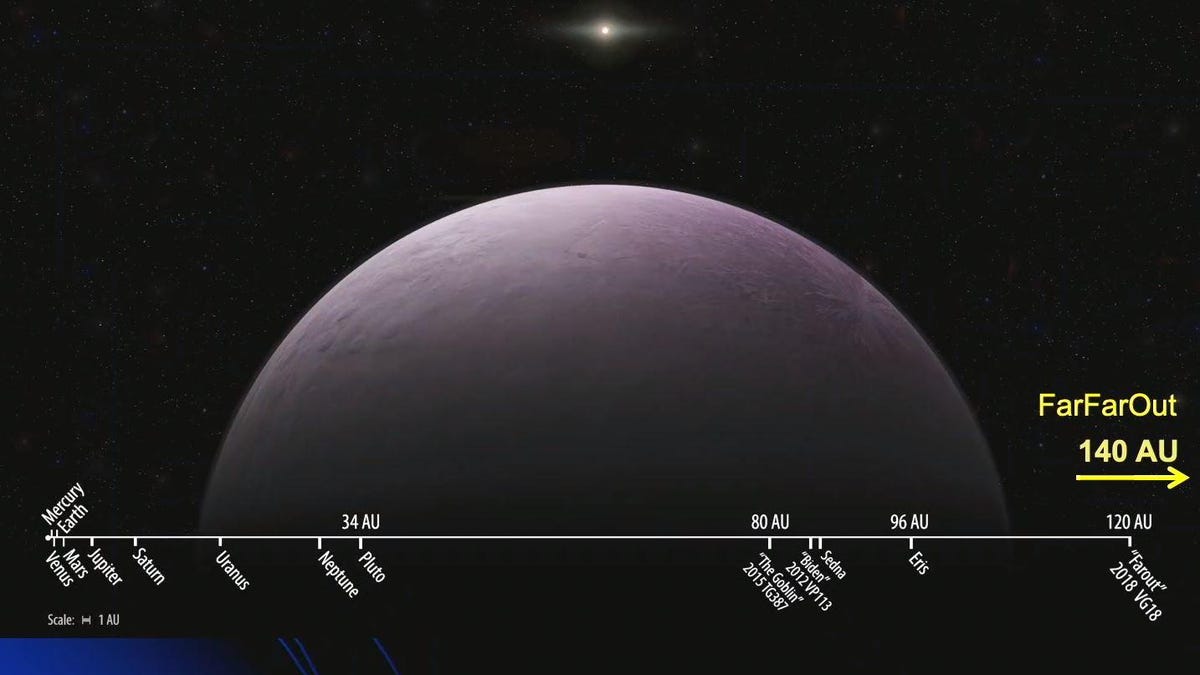Forget 'FarOut': 'FarFarOut' the new farthest object in the solar system
Astronomers haven't spotted Planet X yet, but on a recent snow day one found the newest object to be declared the farthest out.

"FarFarOut" now marks the farthest seen object in the solar system.
Just a couple of months after spotting what seems to be the farthest known object in the solar system and nicknaming it "FarOut," astronomer Scott Sheppard ran into a problem: what do you call an object even farther away?
For now, the solution is to call the newly discovered object over 3.5 times more distant than Pluto "FarFarOut." FarFarOut is currently just a tiny dot on images taken with powerful telescopes. But if it is like FarOut and many other Kuiper Belt Objects, we can assume it's an icy, pinkish and spherical dwarf planet.
Sheppard, a staff scientist at the Carnegie Institution, was scheduled to give a public talk last Wednesday in Washington, DC about distant objects like FarOut and the possible existence of an unseen ninth planet or "Planet X." But a storm postponed the event by 24 hours and Sheppard took advantage of the snow day by poring over some data. Thanks to the extra effort, he found FarFarOut lurking at 140 times the distance between the sun and Earth (about 21 billion kilometers or 13 billion miles).
"So 20 AU (astronomical units, the distance between the sun and Earth) further than FarOut," Sheppard explained during his postponed talk Thursday night. "This was just discovered in our data from last month."
The discoveries of both FarOut and FarFarOut are so new that the objects haven't been studied enough to get a sense of their orbits around the sun. Sheppard -- who's become well-known for helping to discover many of the solar system's smaller moons -- says that could take another year or two to determine.
And Sheppard is already hard at work trying to get a better sense of where, exactly, these distant objects roam. This week he's working at an observatory in Chile to gather more data.
If he finds an even more distant object in that data, it might be time to come up with a new nickname scheme. "FarFarFarOut" feels like taking things a step too far, literally.

